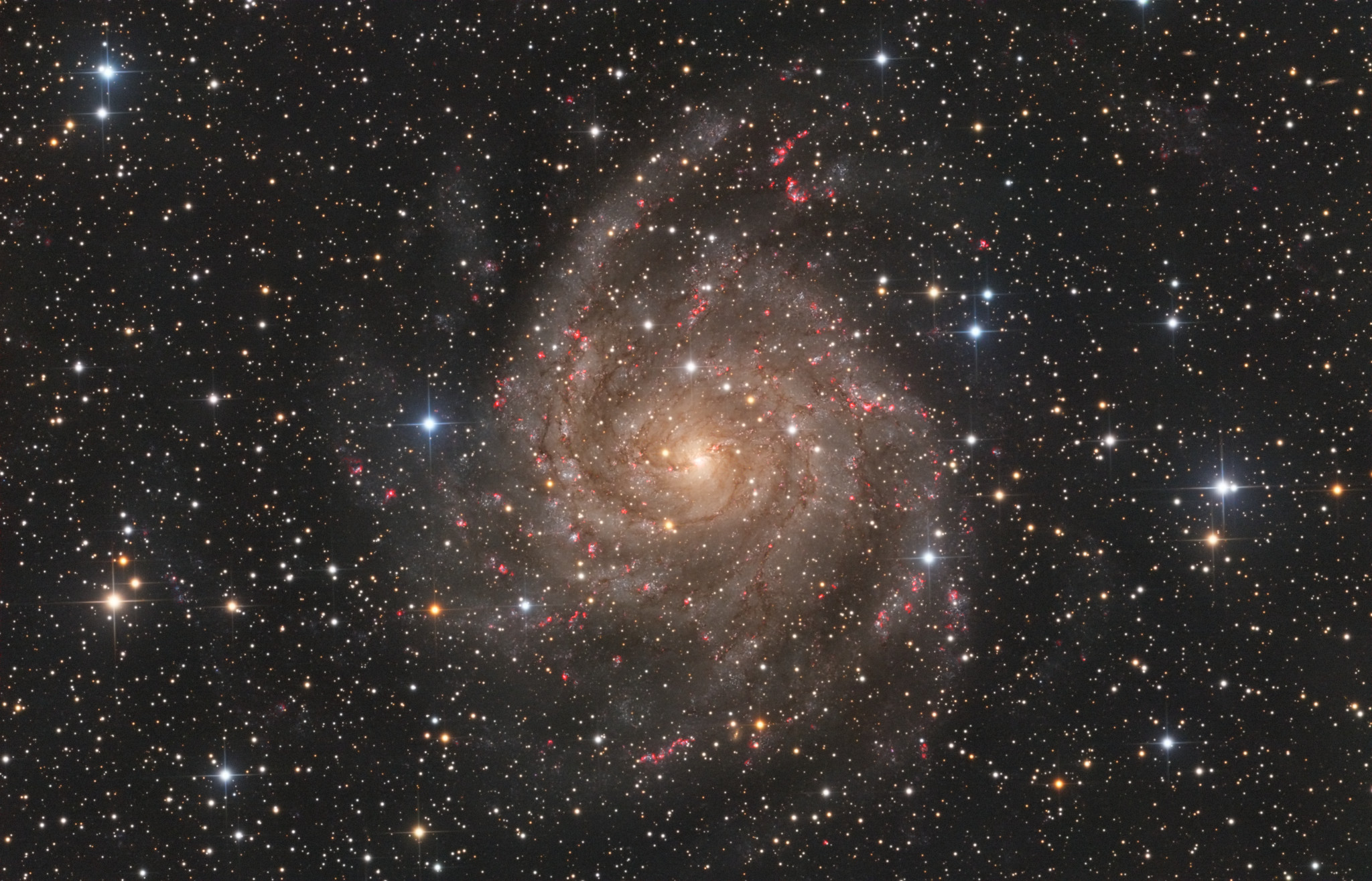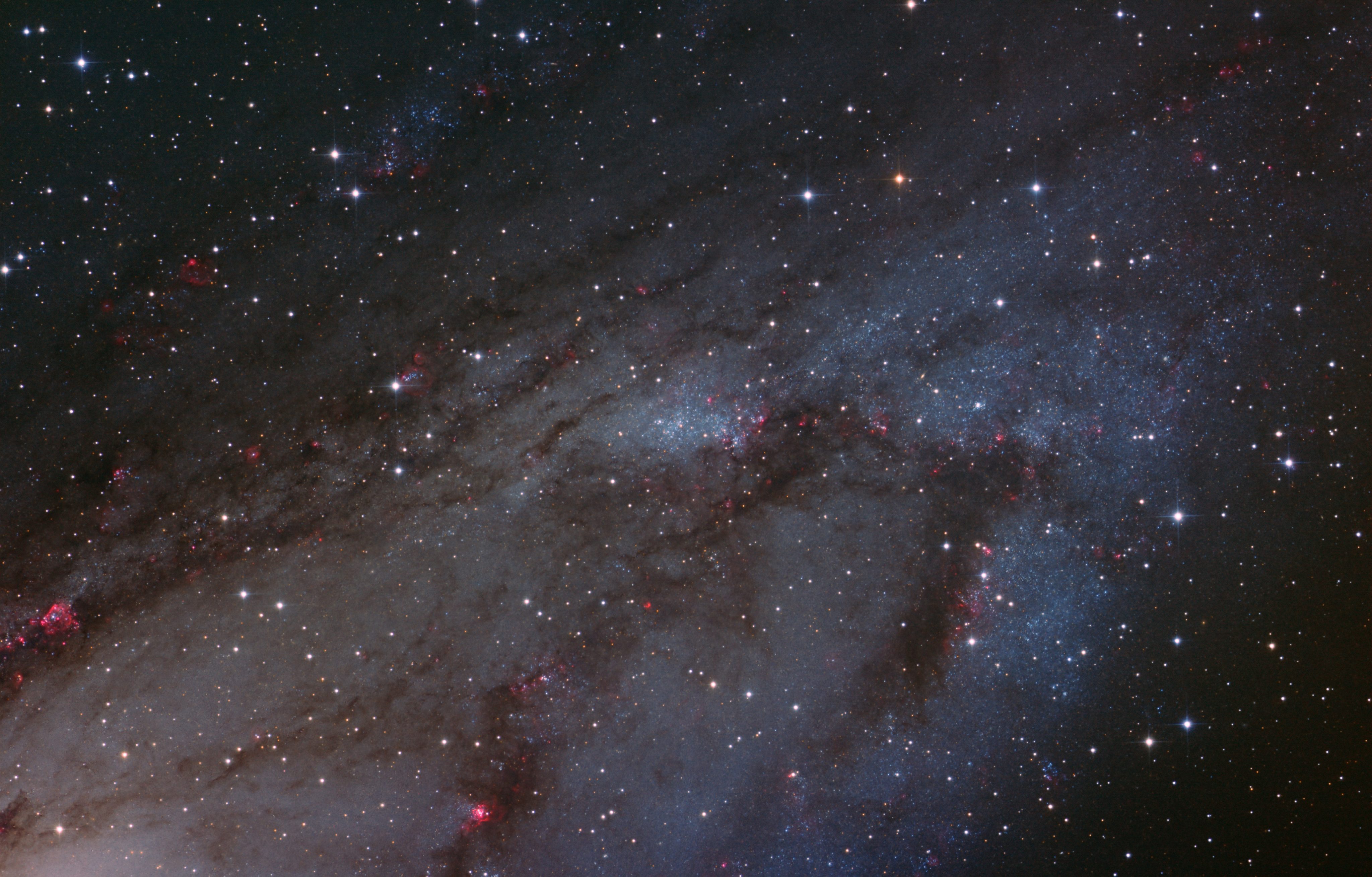
Young stars in galaxies are usually grouped together. These groups may come in a variety of sizes – from relatively small parsec-sized open clusters to very large OB complexes spanning about a thousand of pc. NGC 206 is the richest OB stellar association located in the outer disk of the Andromeda galaxy, M31. Given the proximity of Andromeda and the abundance of massive stars in the association, NGC 206 provides us with a unique laboratory to study stellar formation at the high end of mass spectrum, above 20 M☉. While earlier publications have referred to it as an OB complex due its size (850 pc), later publications call it an OB association primarily due to that it appears to represent a single region where a star formation episode has taken place.
Simulations reveal NGC 206 represents such a large overdensity in the Andromeda galaxy’s disk that it affects it gravitationally, playing a decisive role in the formation of Andromeda’s dust lanes (Mohr 1997; 1998). The age of the NGC 206 association is estimated to be about 20–30 Myr (Brinks 1981, Magnier et al. 1997). It hosts so many massive young stars, including Wolf-Rayet stars and supergiants, that it has carved out a hole, about 800 x 400 pc in size, in the surrounding Andromeda’s neutral hydrogen gas (Hunter et al. 1996). Brinks (1981) has even titled his paper as “a hole in M31.” Similar H I holes, produced by stellar winds and supernovae from hot young stars, have been found in our Galaxy and the Large Magellanic Cloud (LMC). It is estimated that in NGC 206, out of 2 × 106 M☉ of the original Andromeda’s H I gas in the area, ~ 10% has been used to form the stars, ~ 25% was ionized and the rest has been blown away. The hole also coincides with low surface brightness H-α emission.
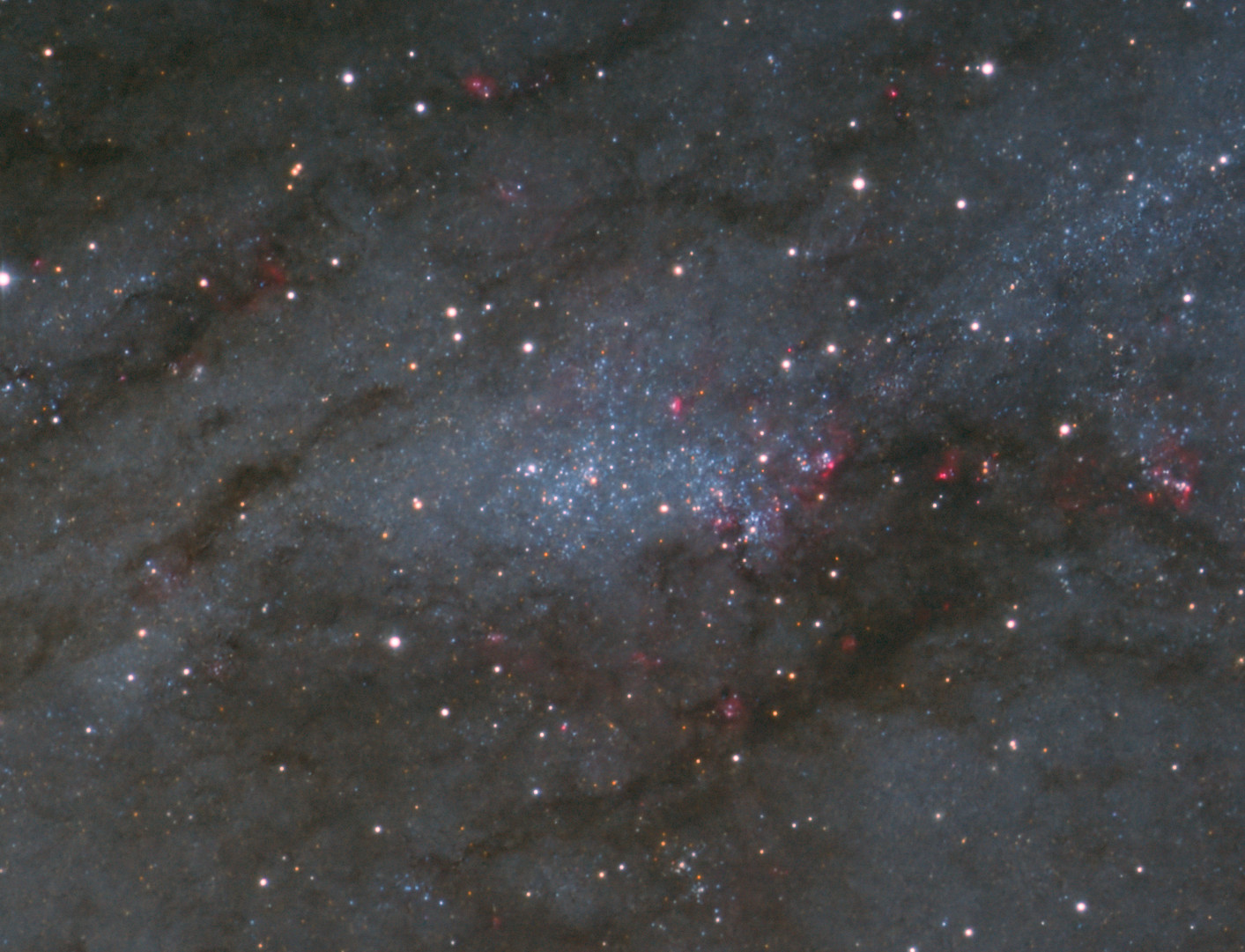
NGC 206 is located in the southern disc of M31, in the area most likely disturbed by the past encounter with its satellite galaxy, a compact elliptical M32 (Kavanagh et al. 2020). This could explain the trigger for the formation of such a large stellar association in Andromeda – an off-center passage of M32 through the disk could also explain the presently observed Andromeda’s ring structure. The exact timing of the encounter is still being debated – some earlier models have put it at ~ 200 Myr ago, albeit having troubles explaining present position of the M 32, while newer models suggest it may have been a much older event – 800 Myr ago (Dierickx et al. 2018). In all cases, the encounter seems to precede the estimated age of the NGC 206 by at least a factor of 10. Was the OB association formed by dynamical disturbances long after the M32 encounter, and if so, what was the reason for such a delay?
A study by Magnier et al. (1997) suggests that as NGC 206 is located at the intersection of two spiral arms of Andromeda it is the interaction between the arms that is responsible for the stellar formation in this association. Could the M32 encounter event have resulted in multiple star-forming events at the site? Could those interactions represent reverberations of the initial gravitational disturbance from the passage – is there any link at all?
In the recent study of the superbubble associated with the giant 465 pc-sized H II region Henize 206 in the LMC by Ramachandran et al. (2018) the ages of OB stars reveal a large spread – from 1 to 30 Myr – suggesting that area has experienced multiple episodes of star formation. It appears OB associations within this complex were formed at different times, albeit that has occurred on a time scale still much shorter to be directly comparable with the M 32 passage time scale. It is interesting that galaxy mergers were recently shown to have little impact on star formation rates (Pearson et al. 2019) or they can even quench stellar formation in the galaxy quite rapidly due to energetic feedback processes (Ellison et al. 2022). An off-center collision of M31 with M32, however, may have produced a completely different effect than a merger. Models suggest this event was responsible for the Andromeda’s star-forming pseudo-ring structure, easily detectable through our telescopes in H-α light.
This H-α RGB image was obtained with the A1 telescope installed at the Alnitak Remote Observatory in Nerpio, Spain:
- 0.43 m PlaneWave CDK17 f/6.8 Corrected Dall-Kirkham Telescope
- Software Bisque Paramount ME German Equatorial Mount
- Moravian Instruments C3-61000 Pro, Back-Illuminated CMOS Camera
- Chroma 50 mm filters (5 nm narrowband H-α, RGB)
- FLI CenterLine CL-1-14 12+2-position Dual Color Filter Wheel
- Optec Sagitta Off-Axis Guider with ASI174MM Guide Camera
Acquisition software: DC-3 ACP, MaximDL Pro, TheSky X
Processing software: DeepSkyStacker, PixInsight, RC Astro BlurXTerminator and NoiseXTerminator, GIMP, StarNet.
OTHER AREAS OF INTEREST
Some of the brightest H II emission regions are shown below, along with their SIMBAD references.
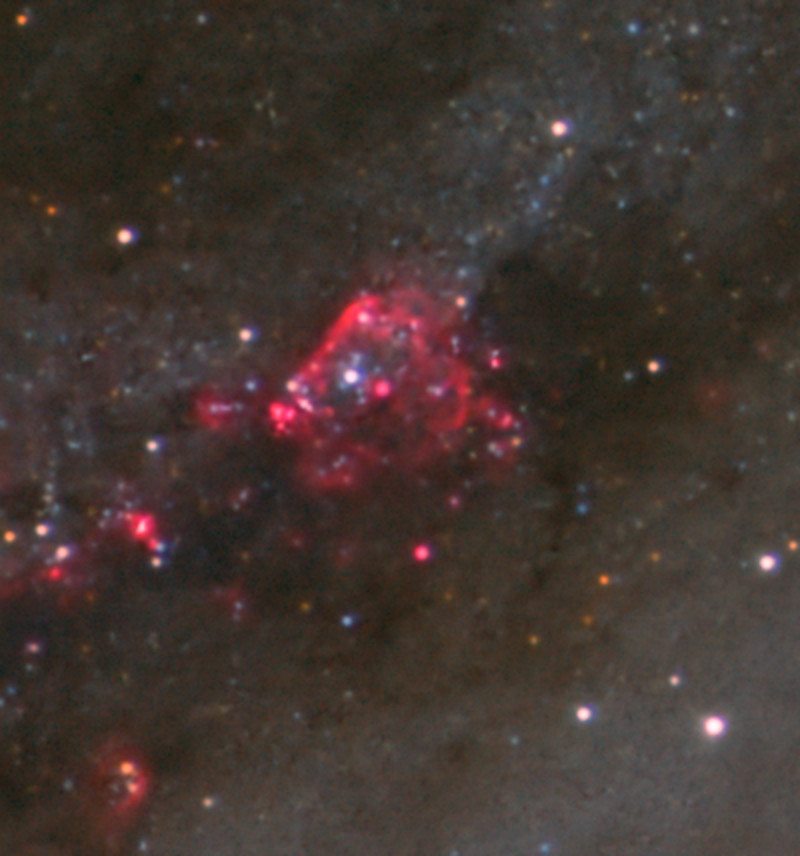
Baade-Arp BA 1-437 H II Region 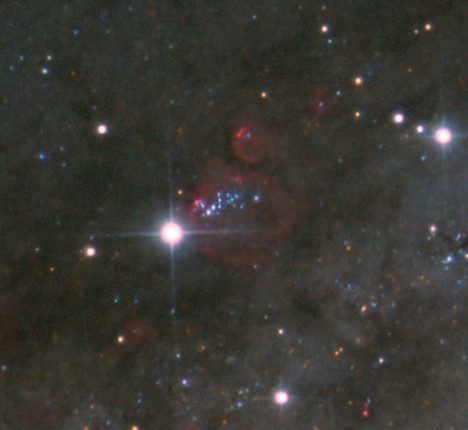
Hodge [H81] B-154 Open Cluster 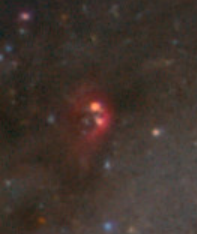
Massey-Armandroff-Conti MAC OB 69-F1 Wolf-Rayet star with a dusty shell over background H II regions? 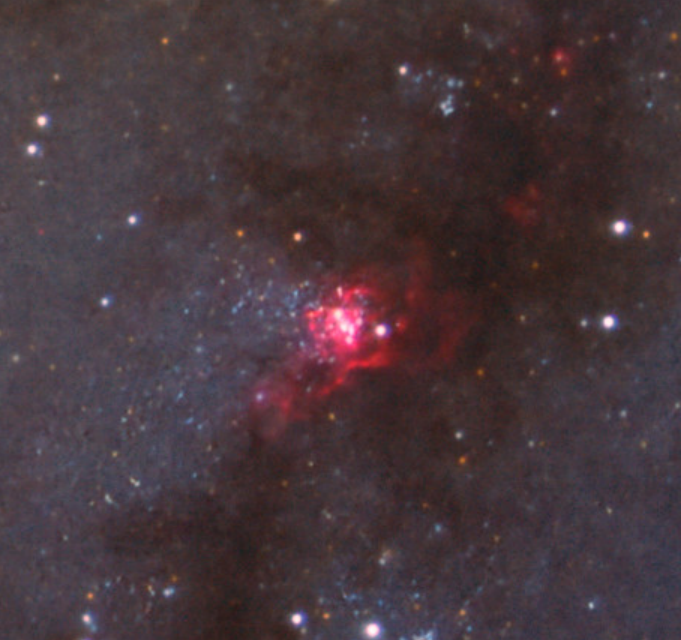
Hodge [H81] B-179 Open Cluster 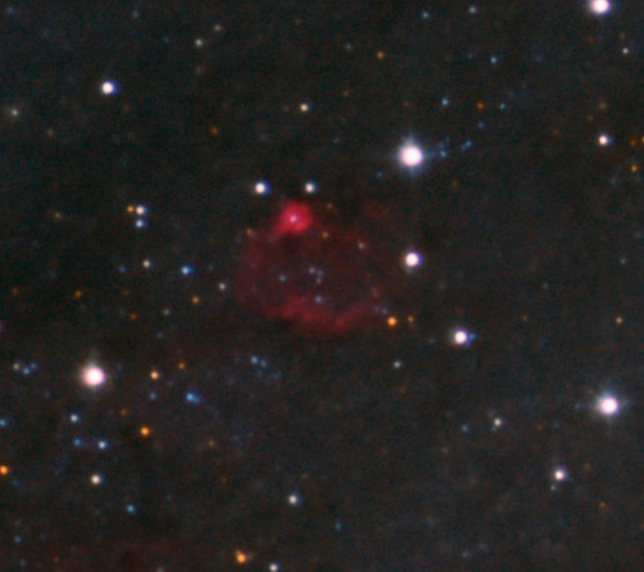
Pellet-Astier-Viale+ [PAV78] 228 Emission Object
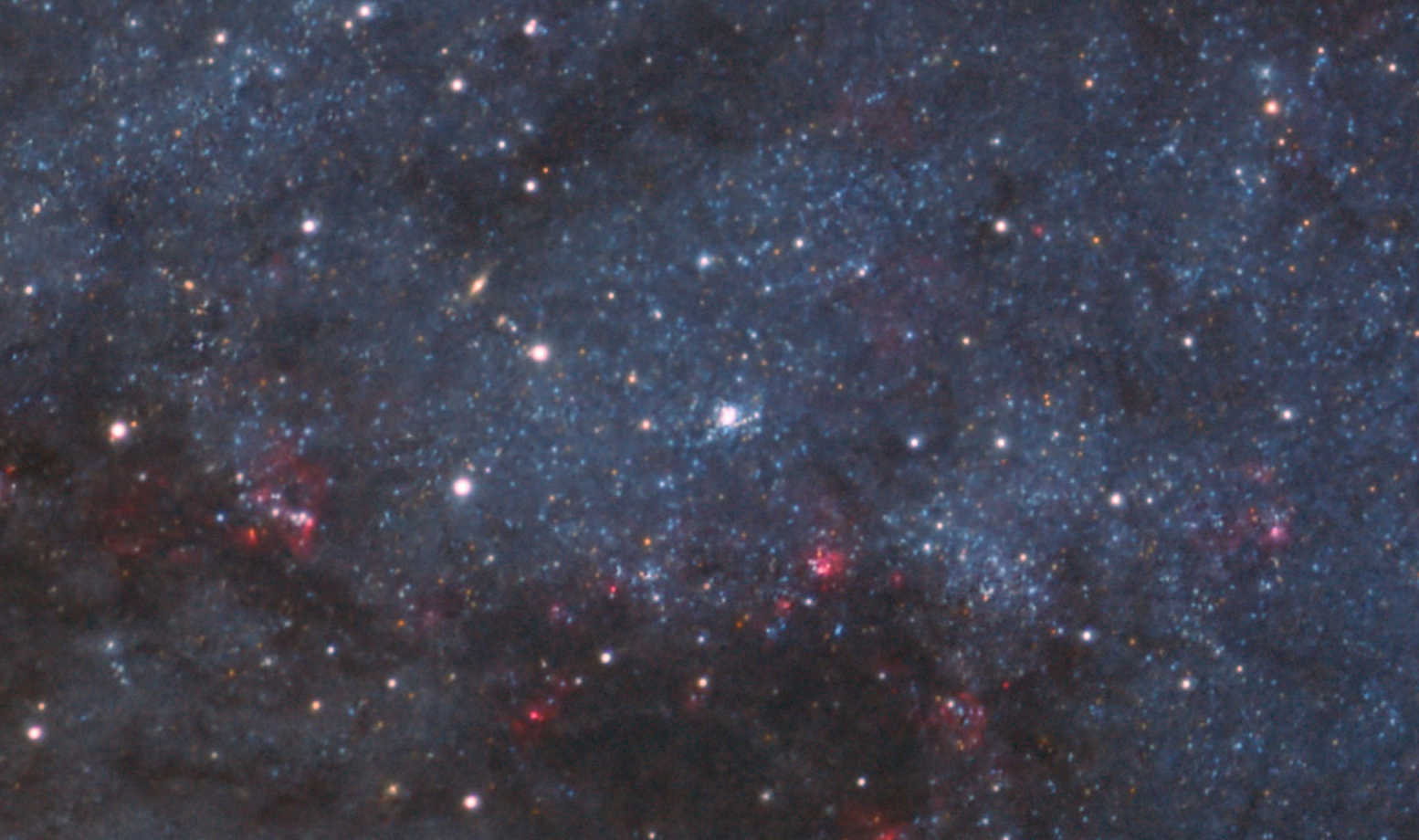
Hodge [H81] B-107 Open Cluster (small and round cluster in the center)
Many of the open clusters are present in the catalogye by Hodge (1979) who has studied 403 open star clusters in M31 on 29 B channel plates obtained with the Kitt Peak National Observatory 4-m telescope. The three Hodge open clusters shown below are also OB associations specified in the Hill-Isensee-Bohlin+ [HIB95] catalog. The Hodge B-179 open cluster is known as the [HIB95] 22-5 OB association, and B-154 is AKA [HIB95] 132-3. The Hodge B-107 is a 15.5 V magnitude small and round open cluster in a dense field of young blue stars. It is AKA [HIB95] 80-8.
The Pellet-Astier-Viale+ 228 emission object appears with the Azimlu-Marciniak-Barmby [AMB2011] HII 480 ionized hydrogen region and Helga 308 molecular cloud on the top of the emission ring.
The Massey-Armandroff-Conti OB 69-F1 is a Wolf-Rayet (WR) star of the WC6–WC7 spectral type. There is a study of H II shells around WR stars in the Andromeda galaxy by Bransford et al. (1999). WR stars are known to form dust shells. I wonder if the dark ring surrounding the star in this image is a dust shell superimposed over H II emission in the background.
REFERENCES
Bransford, M. A., Thilker, D. A., Walterbos, R. A. M., King, N. L. 1999, AJ, 118, 1635
Brinks, E. 1981, A&A, 95L, 1B
Dierickx, M., Blecha, L., Loeb, A. 2018, ApJL, 788, 38
Ellison, S. L., Wilkinson, S., Woo, J., et al. 2022, MNRAS, 517, 92
Hodge, P. W. 1979, AJ, 84, 744
Hunter, D. A., Baum, W. A., O’Neil, E. J., Jr., Lynds, R. 1996, ApJ, 468, 633
Kavanagh, P. J., Sasaki, M., Breitschwerdt, D., et al. 2020, A&A, 637, A12
Magnier, E. A., Prins, S., Augusteikn, T., et al. 1996, A&A, 326, 442
Mohr, R. 1997, BAAS, 29, 1380
Mohr, R. 1998, BAAS, 30, 1407
Odewahn, S. 1987, AJ, 93, 310
Pearson, W. J., Wang, L., Alpaslan, M., et al. 2019, A&A, 631, A51
Ramachandran, V., Hamann, W.-R., Hainich, R., et al. 2018, A&A, 615, A40
